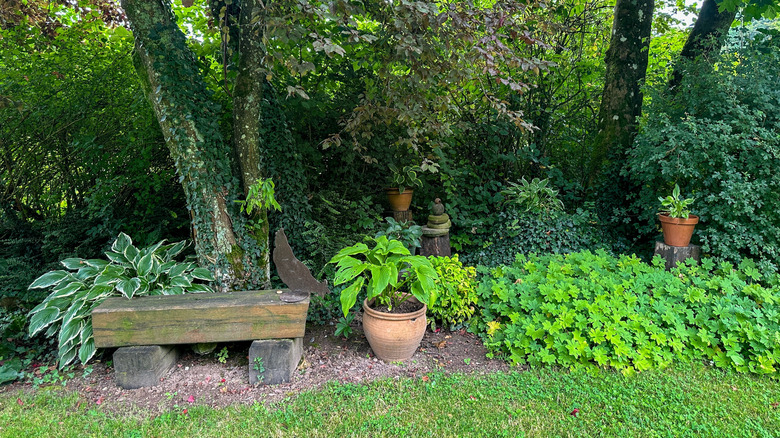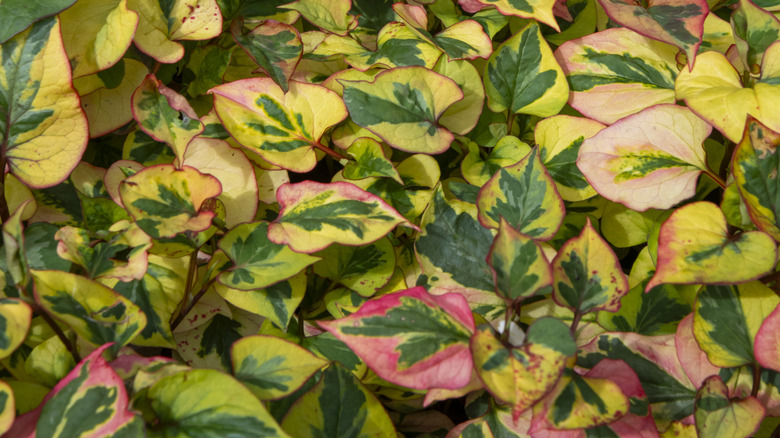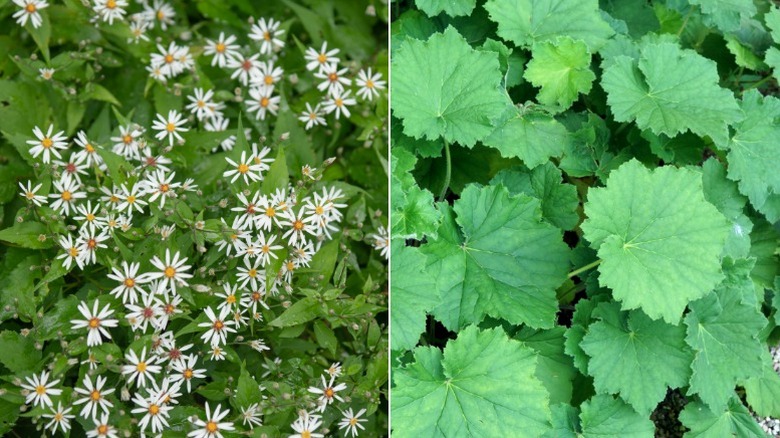The Aggressive Groundcover You'll Want To Avoid Growing (& A Better Alternative Instead)
Sometimes, as you stroll through a nursery or garden center looking for attractive groundcover plants to add to your yard, you'll be stopped in your tracks by an outstanding-looking specimen you simply must have in your garden. But if that appealing species happens to be the chameleon plant (Houttuynia cordata), you should resist every possible urge to take it home. This species is one of the most aggressive groundcovers and will take over entire garden beds before you even have time to blink. While this pretty little plant might look quite innocent in its pot, your dream of seeing it flourish in your garden will soon turn into a nightmare, as it scrambles over anything and everything that dares to get in its way. You'll also find that even though this is one of the ground covers that can help to deter pests, it has an unpleasant fishy fragrance, which is probably not what you want in your garden.
Although the chameleon plant is not on the national invasive plant list, meaning it's not regarded as invasive everywhere in the U.S., it is listed as an invasive species on the New Jersey state list. This means it should not be planted anywhere in New Jersey, without exception. While the chameleon plant can be grown anywhere else in the U.S., anyone who has ever grown it will strongly urge you to avoid it at all cost. Some better alternatives include white wood aster and hairy alumroot.
Why you should avoid growing the chameleon plant
At first glance, the chameleon plant is quite attractive with its heart-shaped leaves and dainty white flowers. There are even cultivars, like Houttuynia cordata 'Chameleon', that have lovely variegated leaves in shades of pink, red, cream and yellow. Plus, the fact it can spread quickly as a great groundcover to help suppress weed growth might also sound appealing to many gardeners. But, it's this aggressive spreading habit that will have you regretting the day you decided to bring this plant home and put it into your garden.
You see, the chameleon plant spreads through rhizomes that will continue to travel along the ground and put down roots wherever they touch the soil. Plus, this plant will grow just about anywhere and has the most incredible survival instinct. This means that even if you dig it out and think you've got all the roots and rhizomes, just the tiniest section left behind will sprout easily, so that the plant can resume its growth. Of course, this makes it almost impossible to eradicate. That's why you'll want to know how to get rid of fast-growing chameleon plants before they take over your yard, so that you don't end up pulling out new growth for years to come.
Native alternatives you might want to grow instead
As is the case with many introduced species that can become invasive, you'll usually find a few native alternatives that are much better suited to your garden. A pretty perennial groundcover you might want to grow is the white wood aster (Eurybia divaricata). This species is native to the Eastern United States and thrives in partial shade. It also spreads via rhizomes, but will take around two to five years to reach a maximum spread of 2 ½ feet. What you'll love about this plant is that it has heart-shaped leaves and showy white daisy-like flowers in late summer. You'll also find it beneficial in attracting both pollinators and birds to your garden. Plus, it can be grown in USDA hardiness zones 3 through 8.
Another native perennial species suitable for zones 3 through 8, as well as partial shade, is hairy alumroot (Heuchera villosa). While this is not a creeper, it does form a lovely mound that can get as wide as 2 feet. This makes it perfect for mass planting as a groundcover. It has impressively large velvety leaves and beautiful bell-shaped flowers in spring, summer, and fall. These grow in panicles and can be either pink or white. You'll also find that another species of heuchera, also known as coral bells, is a dainty plant that can attract beautiful hummingbirds and butterflies to your yard.


